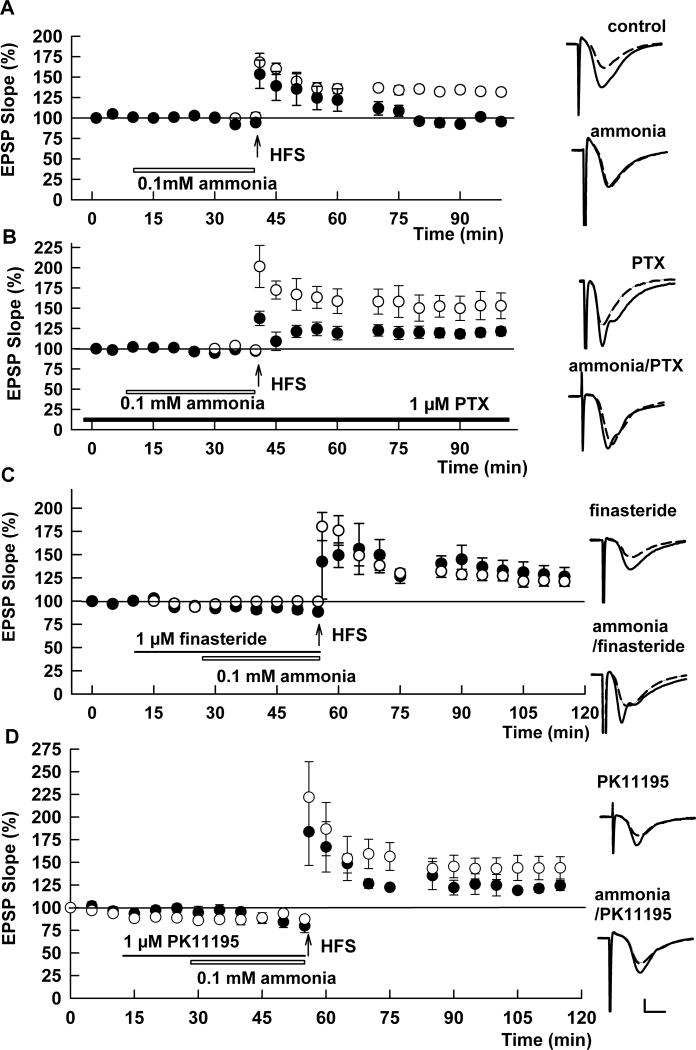Fig. 1.
Ammonia-mediated LTP inhibition involves GABA-A receptors and neurosteroidogenesis. A. In control slices, delivery of a100 Hz × 1 s high frequency stimulus (HFS, arrow) induced robust LTP in the CA1 region as measured by changes in EPSP slopes (open circles). Administration of 100 μM ammonia for 30 min (open bar) prior to and during delivery of HFS attenuated the potentiation of EPSPs (closed circles). B. Ammonia failed to inhibit LTP induction when HFS was administered in the presence of 1 μM PTX, a GABA-A receptor antagonist (black bar). Open circles show effects of PTX alone whereas closed circles show effects of PTX plus ammonia. C. The 5α-reductase inhibitor, finasteride (1μM, closed bar) also overcame the effects of ammonia on LTP. Open circles show effects of finasteride alone whereas closed circles show effects of finasteride plus ammonia. D. Effects of PK11195, a TSPO ligand, on ammonia-mediated LTP inhibition. Because we previously observed that PK11195 has both agonistic and antagonistic effects on TSPO (see supplemental data of Tokuda et al., 2010), we used PK11195 at 1 μM, a concentration at which the agonistic effects are minimal and at which antagonistic effects are partial. In spite of its complex actions, PK11195 overcame the inhibitory effects of ammonia and allowed LTP induction. Open circles show effects of PK11195 alone whereas closed circles show effects of PK11195 plus ammonia. Traces depict EPSPs before (dashed lines) and 60 min after HFS (solid lines). Scale; 1mV, 5 msec.

